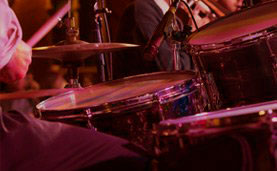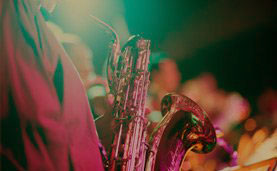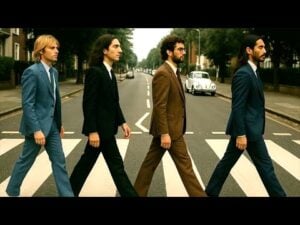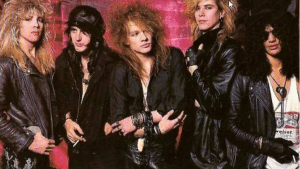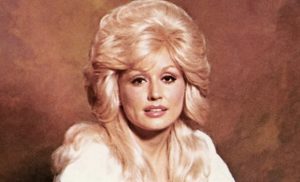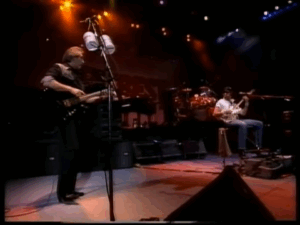Dark Side Of Country Rock In The 60s Revealed
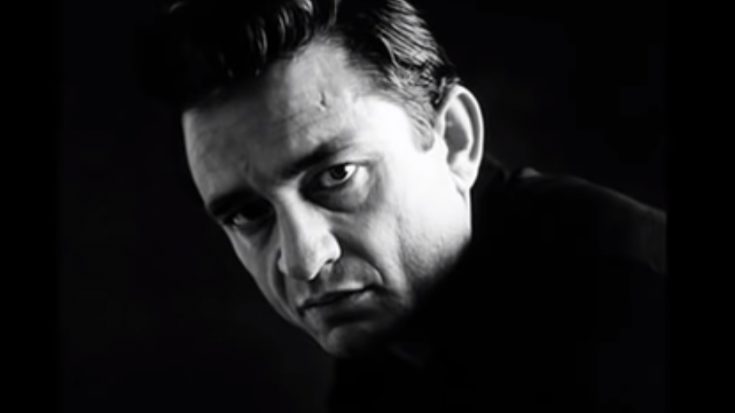
Johnny Cash - Kathi respec / Youtube
The 1960s, a decade of social upheaval, fueled a musical revolution. America’s unrest pulsed through the airwaves, echoed in Bob Dylan’s famous words, “The times they are a-Changin'”. This, coupled with expanding radio and TV, birthed new musical avenues, yet country’s honest grit still resonated deeply.
Urbanization boomed, romanticizing rural life. Songwriters flocked to Nashville, a hotbed of talent, eager to modernize country’s rougher edges. They crafted a sleeker sound for mass appeal, launching themselves to stardom.
But fame is a double-edged sword. “The tougher the life, the sweeter the song,” as the saying goes. Country music intertwined love, loss, and nostalgia, often masking controversy and personal pain. Many artists, like Hank Williams, buried their sorrows publicly, with tragic results.
Notoriety followed fame. Country stars, like Patsy Cline, paid a heavy price for their success. The 1960s country scene, though bright on the surface, held a sinister secret: the dark side of country stardom.
The price families paid due to extensive touring
The 1960s saw major changes for American families. Rising feminism made divorce less scandalous, leading to higher rates but also increased freedom for unhappy spouses.
Meanwhile, country music boomed. Stars hit the road to capitalize on their fame, balancing demanding touring schedules with family life. This juggling act often proved difficult, straining relationships and prompting difficult choices.
Take Tammy Wynette and George Jones, both country stars and married twice before tying the knot themselves. Their tumultuous relationship, mirroring their music, was marked by separations, reconciliations, and ultimately, two divorces.
Wynette’s song “D-I-V-O-R-C-E” captures the impact on their family. This poignant hit tells the story of a mother shielding her son from pain by spelling out the word, revealing the human cost of fame and the pressures faced by families on the road.
Good ol’ segregation was rife in the ‘60s
Country music’s roots may have sprouted in blues and R&B, but 1960s America couldn’t reconcile that with its racial realities. Segregation kept Black artists off mainstream stages, forcing them into a separate “race record” market.
This segregation meant Black audiences couldn’t enjoy white-only shows, musicians were divided by color, and many venues were closed to Black artists. Even the Grand Ole Opry, country’s crown jewel, was complicit in this exclusion.
Only the Civil Rights Act of 1964 began to open doors. Trailblazers like Charley Pride, facing “skin hangups” he called a “disease”, became country superstars, paving the way for a more inclusive future.
But the scars remained. White audiences remained the target, Black contributions went uncredited, and the wounds of segregation wouldn’t fully heal for years to come. Despite progress, 1960s country music carried the baggage of a divided America.
Country stars are living under a microscope
Country stars of the ’60s weren’t just singing their hearts out, they were living them under a microscope. Fame doubled as a spotlight, illuminating not just their stage presence but every personal choice, belief, and relationship.
This attention created a tightrope walk, balancing vulnerability with manufactured image. Reputations and careers hinged on an often-saccharine public persona, leaving little room for real-life messiness. Any perceived stray step triggered a fierce backlash, as Tammy Wynette and George Jones’s separation shows. Fans wouldn’t let Jones’s absence go unnoticed during Wynette’s performances.
Beyond scrutiny, some faced insidious consequences. Johnny Cash and his wife, Vivian Liberto, learned this the hard way. Leaks of photos after her 1965 arrest fueled a storm of racist vitriol. Interracial marriage was taboo, and Liberto’s Sicilian heritage was wrongly interpreted as Black by bigots. Death threats became a chilling reality for the family.
The 1960s country scene thrived on raw emotions, but behind the twang and tears, artists navigated a minefield of public pressure and prejudice. While some, like Wynette and Jones, weathered the storms, others, like the Cash family, faced even graver threats. The price of fame, in this world, was sometimes more than a broken heart.
The ever-present demon of substance abuse
Whiskey wasn’t the only demon haunting 1960s country stars. Grueling tours, stretching over hundreds of miles and demanding night after night of perfection, wore down both bodies and minds. To cope, many turned to solace in the bottle and beyond, seeking a numb escape from the pressure cooker of fame.
Alcohol and drugs amplified personal demons. Interviews with session musicians paint a grim picture of pills becoming commonplace backstage. For stars like George Jones, the toll was heavy. Initially a Houdini act of disappearing then reappearing in the limelight, his alcoholism and cocaine addiction eventually earned him the infamous nickname “No Show Jones”.
Johnny Cash, another titan of the genre, was brutally honest about his struggles. His memoirs detail the ease of acquiring pills from doctors and their seductive comfort. His son, John Carter Cash, believes prescription medication also haunted his mother, reinforcing the picture of a scene grappling with its own dark allure.
So, while the songs spun tales of hard living and heartache, reality often mirrored the lyrics, its toll etched deep in the lives of those who brought those stories to life. The 1960s country scene, for all its glittering success, was shadowed by whispers of addiction, a hidden tragedy playing out behind the bright stage lights.
Mental health is a taboo subject
Talking openly about mental health was a taboo waltz in the 1960s, yet country music thrummed with heartache, loneliness, and the ghosts of hidden struggles. Many stars, like George Jones, found fame a double-edged sword, unable to reconcile “fortune” with “peace of mind.” The pressure to conform to a macho, hard-drinking persona only deepened the isolation.
Women like Tammy Wynette, battling severe depression in silence, were not strangers to this invisible pain. Twelve electroshock treatments during pregnancy, a secret she guarded fiercely, illustrate the stigma attached.
Yet, hope flickered. Some, like Loretta Lynn, openly discussed their battles, paving the way for others. Stars who found recovery in later years became beacons of awareness, proving that even the brightest lights could grapple with inner darkness.
The 1960s country scene mirrored a society wrestling with mental health’s shadows. Though voices remained mostly hushed, the music itself hummed with a bittersweet truth, hinting at the battles fought behind the glittering stage lights.
https://twitter.com/countrymusichof/status/1229572306177011712
Domestic violence is a shameful open secret
While feminism blossomed in the 1960s, domestic violence remained a shameful secret lurking within country music. Songs might depict troubled men fueled by alcohol and drugs, but the reality for many female artists was far bleaker. Their industry, dominated by men, largely ignored or downplayed abuse, shielding perpetrators from consequences.
The silence stemmed from the era’s view of domestic violence as a private matter. Vivian Liberto, Johnny Cash’s ex-wife, detailed his alleged physical abuse in her book. And while Tammy Wynette claimed a stranger kidnapped and beat her, doubts swirled, with her daughter later suggesting she fabricated the story to protect her manager and husband, George Richey.
Loretta Lynn’s marriage to Oliver “Doolittle” Lynn was another turbulent saga etched in songs. Drunkenness, violence, and infidelity fueled their relationship, which Lynn endured “because of six kids”. Despite glimmers of defiance in her music, the industry’s silence on abuse kept many women trapped in painful cycles.
The 1960s country scene, for all its twang and grit, harbored a dark secret. Behind the stage lights, a battle against domestic violence raged in whispers, fueled by a powerful industry that turned a blind eye. Only years later, as voices bravely rose, did the shadows begin to lift, leaving a haunting reminder of the cost of fame and the struggle for justice in the shadows.
Infidelity is celebrated in songs like a badge
Backstage whispers and lonely hotel rooms fueled an epidemic of infidelity in 1960s country music. Long road trips, broken marriages, and simmering tensions created the perfect storm for straying hearts. Even icons like Johnny Cash and June Carter, whose love story began as an affair, weren’t immune to Cash’s persistent infidelities throughout the decade.
But the spotlight of betrayal rarely shone equally. Most cheating anthems were sung by men, lamenting lost loves or, in Cash’s case, celebrating forbidden flames. Women, on the other hand, painted the grim portraits of sorrow and anger left behind.
Loretta Lynn wielded this heartbreak with a master’s touch. Drawing from her own stormy marriage, she crafted relatable hits like “Fist City”, a scathing ode to marital infidelity. Ironically, Lynn later revealed her husband’s wandering eye came with a financial perk: a hefty share of her earnings.
So, while country melodies spun tales of heartache and betrayal, behind the twang and tears, a quieter narrative unfolded – women bearing the brunt of broken vows, their voices sometimes muted, sometimes defiant, but always resonating with the bittersweet truth of a world where love could be as fleeting as a highway song.
https://twitter.com/EzraEfrat/status/1675168659419942913
The 1960s country music is a misogynistic boys’ club
1960s country music: a landscape painted in shades of contradiction. On one hand, feminism marched towards progress, yet beneath the twangy surface, the boys’ club persisted. Women became backup singers, not bandleaders, their voices confined to harmonies rather than headlining tours.
But look closer, and shadows shift. Through songs, women wove tales of suffering and desire, yes, but also defiance. Dolly Parton’s “Dumb Blonde” wasn’t a lament, but a fist-pumping anthem against stereotypes. Patsy Cline, working mom and music trailblazer, shattered expectations with every note.
Loretta Lynn, married at 15, mother of six by mid-decade, refused to be sidelined. “The Pill”, her anthem of female agency, sparked firestorms, still deemed too “scandalous” for some airwaves. But Lynn, like many others, paved the way with grit and talent, rewriting the rules for future generations.
So, was it a boys’ club? Yes, to an extent. But amidst the shadows, women wrote their own verses, challenging norms, singing of heartbreak and empowerment. They may have been underrepresented, but their voices echoed through the decades, forever changing the country music landscape.
Artists, even big-time ones, are heavily exploited
The country scene of the ‘60s gleamed with rhinestones, but behind the sparkle lurked sharks. Managers like “Colonel” Tom Parker, who siphoned off half of Elvis’ earnings, epitomized their exploitative power. Artists, often young and naive, were easily snared in contracts that devoured their profits.
Control wasn’t solely financial. Nashville producers like Chet Atkins, gatekeepers of “the Nashville Sound”, dictated the sonic landscape. Their smooth, pop-infused style fueled countless hits, but stifled artistic diversity, ultimately contributing to the genre’s eventual shift.
Jim Denny, the Grand Ole Opry’s talent czar, held another key. Aspiring stars, even established names like Johnny Cash, faced his gauntlet. Access to the Opry stage, a career-maker, hinged on his fickle approval, adding another layer to the industry’s power dynamics.
While some thrived in this ecosystem, others were chewed up and spat out. The 1960s country scene, for all its glitter, harbored a dark underbelly of manipulation and control, shaping the music both for better and worse and leaving behind a legacy of both success and exploitation.
The perilous travels from gig to gig
February 3rd, 1959, became a mournful refrain in American music – it was “the day the music died”. A plane hurtling towards a gig carried away not just passengers, but a constellation of talent: Buddy Holly, Ritchie Valens, and the Big Bopper, their voices forever frozen in time.
The 1960s country scene echoed this fragility. Grueling travel schedules remained a grim reaper, claiming stars just as they reached their prime. Patsy Cline, her voice an aching tapestry of emotion, perished in a 1963 plane crash, along with fellow artists Cowboy Copas and Hawkshaw Hawkins. Jim Reeves, a master of the smooth “Nashville Sound”, met a similar fate the following year, his plane vanishing into the unknown.
But the roads, too, proved treacherous. Patsy Cline herself had escaped a perilous car crash in 1961, only to witness tragedy strike. Rising star Johnny Horton, driving back from an Austin concert in 1960, never reached his destination. His name joined a growing list of talents silenced by the unforgiving asphalt.
The 1960s country music world glittered with rhinestone and twang, but beneath the surface lay a stark reality – a landscape littered with shattered dreams and silenced melodies. These fallen stars, their talent cut short, became haunting echoes, forever reminding us of the fragility of life and the bittersweet beauty of music that transcends even the cruelest of endings.
The tides of fame easily turn and leave you reeling
You dodged the pitfalls of ’60s country life – the betrayals, the needles, the endless nights on wheels. So, smooth sailing now, right? Wrong. The tide was turning.
Rock roared, psychedelia shimmered, and Nashville’s slick “Sound” felt stuffy. Young ears craved new grooves. Country labels, sensing the shift, backed their money on established stars, squeezing out fresh voices.
The polished croons, once golden tickets, turned shackles. Rebellion simmered. Enter Kris Kristofferson and Willie Nelson, wielding outlaw grit, blending country twang with the raw edges of Southern rock.
This musical mutiny, as “Will the Circle Be Unbroken” tells us, birthed “outlaw country” – a genre poised to rule the 70s. The ’60s stars faced a stark choice: adapt or fade. The country landscape was about to be reshaped, leaving no room for complacency.


